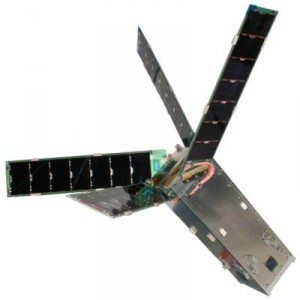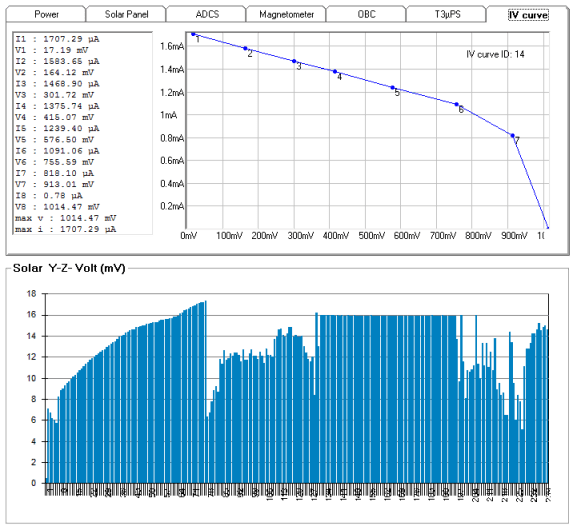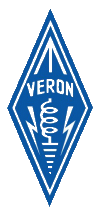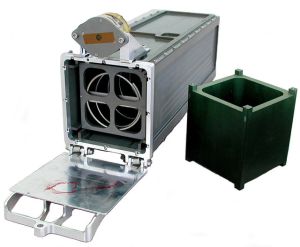Delfi-n3Xt: Request for help on S-band reception
Dear all,
It has been a while since you heard from us. We are still having problems to receive our satellite since our transponder test. We now want to try something different: trying to activate our S-band transmitter and let it transmit at full power for a pass. If we are able to receive a signal from the S-band, we know that Delfi-n3Xt still has an operational receiver and we could potentially demodulate the S-band signal. But since we already know that the latter is  difficult, the first focus is just to “see” the signal. Since the satellite is still tumbling, it is a matter of link budget and statistics if we are able to catch the signal. To increase our chanceswe would like to ask the help of radio amateurs in the neighbourhood with suitable equipment. Since we have to actively command the satellite we have planned the passes which are suitable for the Netherlands, Germany, Belgium and Northern France and the availability of operators from our side. According to a quick survey, you are living in the area in reach at the selected passes.
difficult, the first focus is just to “see” the signal. Since the satellite is still tumbling, it is a matter of link budget and statistics if we are able to catch the signal. To increase our chanceswe would like to ask the help of radio amateurs in the neighbourhood with suitable equipment. Since we have to actively command the satellite we have planned the passes which are suitable for the Netherlands, Germany, Belgium and Northern France and the availability of operators from our side. According to a quick survey, you are living in the area in reach at the selected passes.
The question to you:
Do you have S-band (2405 MHz) reception functionality with a dish of at least 2.5 meter and tracking capability and willing to follow and record one or more passes for us?
If so, please let us know your location, the gain of your antenna and the passes you are able to follow. Off course you do not have to be actively present during the pass. You can just record it and send the recording later through www.wetransfer.com.
Delfi-n3Xt will send at 2405 MHz +/- 100 kHz. The latter is the worst case uncertainty band, but I expect it to be pretty close to the right frequency. If you have an SDR, you can best set it at +/- 1 MHz around the centre frequency. Off course you do not have to be actively present during the pass. You can just record it
The planned attempts are stated by the LOCAL time of commanding below. If successful transmission would be within the 10-20 minutes after the indicated time.
- Tue 13-05 ~11.25h local time
- Wed 14-05 ~12:00h local time
- Thu 15-05 ~22:10h local time
- Fri 16-05 ~11:35h local time
- Sat 17-05 ~12:10h local time
If you are able, your help is highly appreciated!
Vy 73,
Jasper (PC4JB)



 Hot off the press – Lecture Cubesats Veron Breda (R07)
Hot off the press – Lecture Cubesats Veron Breda (R07) universities worldwide to perform space science and exploration. Since CubeSats are all 10×10 cm (regardless of length) they can all be launched and deployed using a common deployment system. CubeSats are typically launched and deployed from a mechanism called a Poly-PicoSatellite Orbital Deployer (P-POD), also developed and built by Cal Poly. P-PODs are mounted to a launch vehicle and carry CubeSats into orbit and deploy them once the proper signal is received from the launch vehicle. P-PODs have deployed over 90% of all CubeSats launched to date (including un-successful launches), and 100% of all CubeSats launched since 2006.
universities worldwide to perform space science and exploration. Since CubeSats are all 10×10 cm (regardless of length) they can all be launched and deployed using a common deployment system. CubeSats are typically launched and deployed from a mechanism called a Poly-PicoSatellite Orbital Deployer (P-POD), also developed and built by Cal Poly. P-PODs are mounted to a launch vehicle and carry CubeSats into orbit and deploy them once the proper signal is received from the launch vehicle. P-PODs have deployed over 90% of all CubeSats launched to date (including un-successful launches), and 100% of all CubeSats launched since 2006.